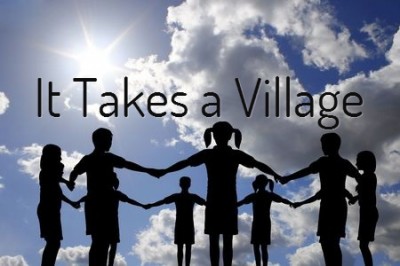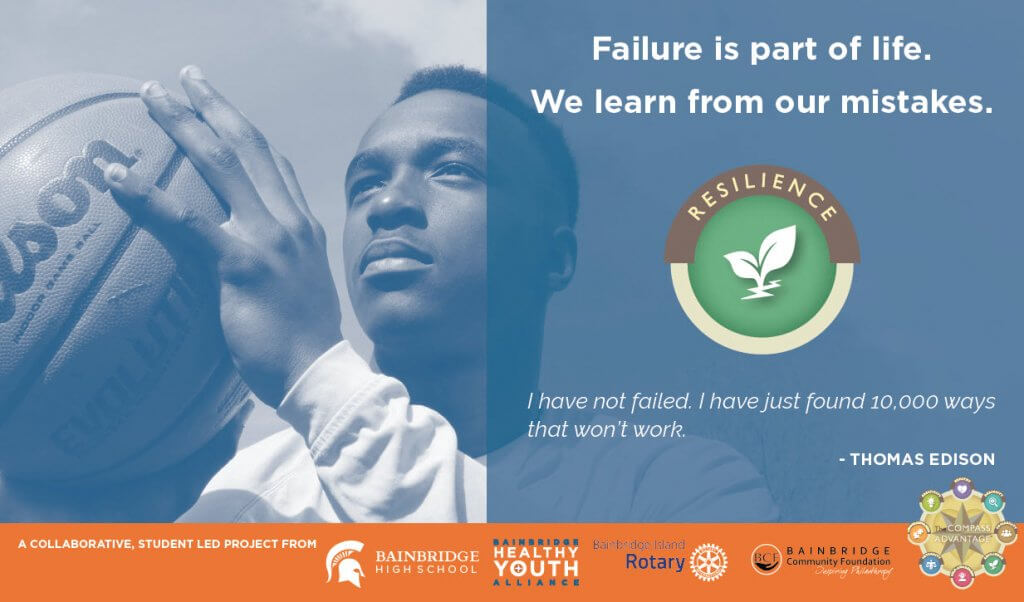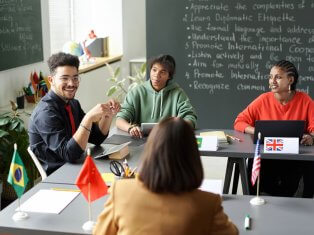
Communities make a positive difference for children and families when they connect around common values, form meaningful relationships with each other, and provide resources that help kids flourish in life.
We know this to be true, not just from research, but because we know deep in our bones that the proverb, “It takes a village to raise a child,” is spot-on. How do communities support children and families in an age where many kids don’t even know their neighbors? Where do they begin? Who is responsible? These are important questions for all communities, large and small.
I feel very grateful to live in the small community of Bainbridge Island, Washington — a short ferry ride from downtown Seattle. It’s a place with great schools, highly educated families, and low crime. The issues facing children and families here are very different from a larger, urban city like Detroit, Michigan, where I grew up.
In 2013, I had the pleasure of hosting a meeting with eight parent and community leaders from the Detroit Parent Network, a nonprofit group working to support children and families in neighborhoods with under-performing schools, poverty, gang violence, and high crime rates.
Almost immediately after stepping off the ferry on Bainbridge Island and walking down our main street of boutique shops and art galleries, one woman in the group exclaimed, “This must be an amazing place for kids to grow up!” Over lunch, another person said, “What kinds of problems could youth possibly have here? They have everything!”
As our conversation evolved over several hours, we discovered our communities had more in common than we ever imagined. Despite our cultural and socio-economic differences, we had exactly the same goals for our children. We wanted them to feel loved and respected, and to live productive and meaningful lives.
We also discovered our children and families had common challenges, including those that resulted from mental health problems, substance abuse, addictions, bullying, stressed lifestyles, and learning disabilities. Deep down, we understood that all families, regardless of income, needed support from their communities in order to thrive in today’s society.
How Do Communities Support Children and Families?
Often, when we talk about communities, it’s easy to step back from the conversation and point to the public agencies that make up our cities and regional centers. We look at schools, nonprofit organizations, city governments, and police departments to do the caring. When needs aren’t being met for children and families, we blame these agencies — as if to say that they define our community.
Public agencies can only support positive youth development when they work in partnership with one another and with individual community members, including children and families. The work is about building relationships with parents and youth, and helping them discover the power of their own voices. It’s about involving everyone in conversations that matter, and collaborating to raise and educate kids who embrace lifelong learning and who succeed in school and life. In this kind of scenario, we are all responsible.
This collaborative approach is shared by the Detroit Parent Network and by an initiative in my own community, the Alliance for Youth. Each effort began by meeting the community where it was. That means drawing information and input from a variety of sources, including families and youth. The work must inspire people to dream about the kind of future they want for children. It must challenge them to ask new questions! And finally, it must invite them to the table of responsibility. Everyone must commit to individual actions. Leaders must emerge to facilitate collective actions.
Watch and listen to the conversations that took place at a Healthy Youth Summit on Bainbridge Island in 2014. The power of individuals who come together when they care about children and families is quite astonishing! The Compass Advantage framework was in its infancy at that time, so you’ll notice the first version in the video that eventually became the compass used today.
Small Actions Reap Big Rewards
What many fail to recognize is that people, not programs, reap the biggest rewards for children. Of course, programs for youth are important just as school curriculum is important. But it’s the people behind the programs and the small actions they take on a daily basis that improve children’s lives. We must become role models to children, nurture their academic and emotional intelligence, and attend to their special needs.
Think back to a person who influenced your life as a child or teenager. What were the qualities they possessed? How did they support your education and learning? How did they impact your character? How did they support you when you were faced with life challenges or moral dilemmas?
What research has shown over and over again is that small everyday actions on behalf of children are the keys to their success.
How do communities show they care about children and families? Through collaborative efforts that bring forth small, sustainable, grassroots actions that matter most to the youth of their communities!
The Next Chapter
Following a number of Youth Summits, the Alliance for Youth worked tirelessly in the Bainbridge Island community. The creative work that teens and adults did together over a number of years led to the development of a Community Promise based on the Compass Advantage framework and many other materials that are now freely shared at Roots of Action. Teens took on leadership roles in their schools to highlight the importance of their core compass abilities. This work continues to be supported by numerous community partners, including the school district who decided to integrate social-emotional learning into classrooms.
Below is one of the banners that were designed by Bainbridge High School students. One banner for each of the compass abilities hangs in the school’s entrance and more are seen throughout the hallways. Nurturing children’s internal strengths has become a priority for everyone involved.
Image Credits: Pavel Losevsky; Adrian Sawyer
(This article was first published March 18, 2014. It was updated with new information August 14, 2019.)
Published: August 14, 2019
Tags: children and families, Family-School Partnerships, initiative, learning, parent involvement, parenting, positive youth development, problem solving, Underserved Youth, youth development approach



